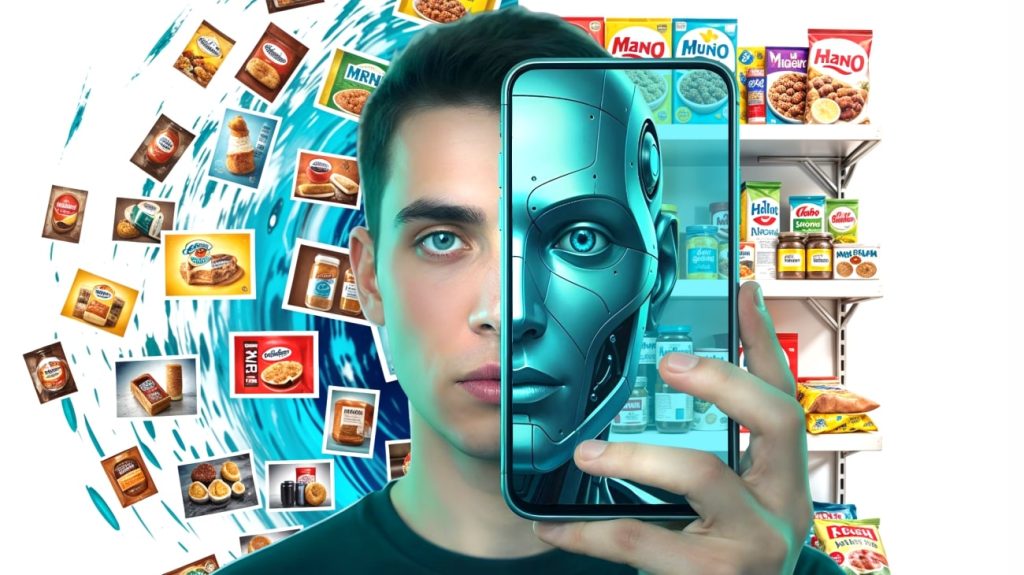Hundreds of events occur every day that have an impact on people and their purchasing behavior. Managers need to bear this in mind when making decisions about business development. Today they have to quickly respond to market changes and customer behavior in order to offer their target audience what they need at the moment.
This article will deal with three priorities that managers of FMCG companies should keep in mind. This will help gain competitive edge, attract new customers and drive up profits.

Consumers today are more demanding than ever before. They changed their habits and attitude towards brands, and now share zero loyalty and zero middle ground. So, what is it?
Zero loyalty and omnichannel. People are already accustomed to buying fast-moving consumer goods, such as food, via different channels: both traditionally in offline stores and from online retailers. Additional services, such as fast delivery or easy refunds, are no longer optional, but have become essential conditions of sale. Moreover, such buyers are less attached to any brand: people easily replace products from one manufacturer with another if they don’t like something.
These habits have been reinforced during COVID-19, when supply chains have been disrupted and products were often out of stock; when restrictions were imposed on going out and online deliveries became popular. Therefore, companies today are faced with service-demanding customers who do not have strong brand loyalty.
Zero Middle Ground and Sustainable Brands. Buyers today are more conscious of health and the environment. Therefore, consumers are increasingly purchasing products from companies that offer environmentally friendly, sustainable, yet affordable products.
In addition, buyers have become less likely to choose mid-priced products: today they purchase inexpensive products in some categories, while at the same time they prefer premium products in others. For example, a person may buy cheap household goods, but spend more on expensive products and experiences.
Products and Lifestyle. FMCG companies should keep in mind that today, in order to draw the attention of buyers, it would be great to demonstrate the use of the product in real life, to create the desired image. Product and lifestyle are inextricably linked. A survey by Dimensional Research showed: 91% of retailers have already recognized that proper visual presentation of goods enhances business KPIs.
But it is worth remembering that you cannot deceive buyers in the advertising message. Today, you need to be open and honest, as 83% of buyers are willing to return a product if it is not what is shown in the advertisement. And given the “zero consumer” phenomenon, you can quickly lose your audience.
Suppliers become clients of retailers

As was previously the case, retailers purchased goods from suppliers and sold them to end customers. But now suppliers take more interest in understanding end consumers in order to tailor their products, pricing strategies and product mix to the needs of the audience. Therefore, suppliers begin to buy analytics from retailers and become clients of retail companies.
Other formats of relationships between suppliers and retailers are also extending, in addition to the purchase and sale of goods. For example, retail chains are heavily investing in Retail Media Networks. These are retailers’ own online platforms where suppliers can advertise their products, for example, on special pages or in search results.
Currently, Retail Media Networks account for less than 10 percent of retailers’ profits, but by 2027, experts predict that profits from RMN will reach 40 percent. In addition, such online platforms help conduct consumer research and better understand the needs of your target audience.
Business Intelligence and AI are key tools for FMCG companies

To satisfy consumer needs today, you need to know the market environment well and be aware of your strengths and weaknesses. This will help retain current customers, expand the audience, and attract “zero consumers”.
To properly adjust your marketing strategy, you need to automate and analyze all business aspects: from purchasing to merchandising. According to McKinsey, companies that have implemented digital solutions have a TSR (Total Shareholders Return) rate of 2.5 times higher than their competitors.

Goods Checker to analyze KPIs by brand representation
Let’s look at how computer vision helped a drug manufacturer analyze KPIs based on the visibility of products online. The company sells its products in 8,800 pharmacies in three countries. Therefore, it is essential to monitor compliance with planograms and understand which pharmacies meet the conditions for brand representation and which do not. Now the goods are laid out by medical representatives of the customer, take photos of the shelves and send them to managers, who manually check the display against the planogram. This process is time-consuming and prone to regular errors, for example due to fatigue or inattention.
The company’s management decided to automate display monitoring and set up detailed analytics on brand representation and staff performance.
With Goods Checker, managers receive detailed reports on the situation with goods on the shelf. Now the client uses a BI system which provides the following data in near-real time:
- analytics on compliance with planograms by country/city, brand, employee;
- must stock list,
- out-of-stock;
- analytics on employee performance in various aspects.
Client managers receive complete, reliable and up-to-date data, quickly analyze the necessary KPIs, and also make objective management decisions based on analytical reports.
Data becomes a product

Leading retailers use analytics and artificial intelligence to study and improve product mix, estimate sales promotions, create personalized offers, improve user experience, review staff performance, etc. All this helps expand the target audience, reach new segments and retain current customers.
In addition, analytics is no longer just information for decision making. It has become a separate product that companies can monetize, receive additional profits and develop new types of relationships with counterparties.
Investing in BI systems and investigating each process allows FMCG companies to identify bottlenecks in processes and turn weaknesses into competitive advantages.




